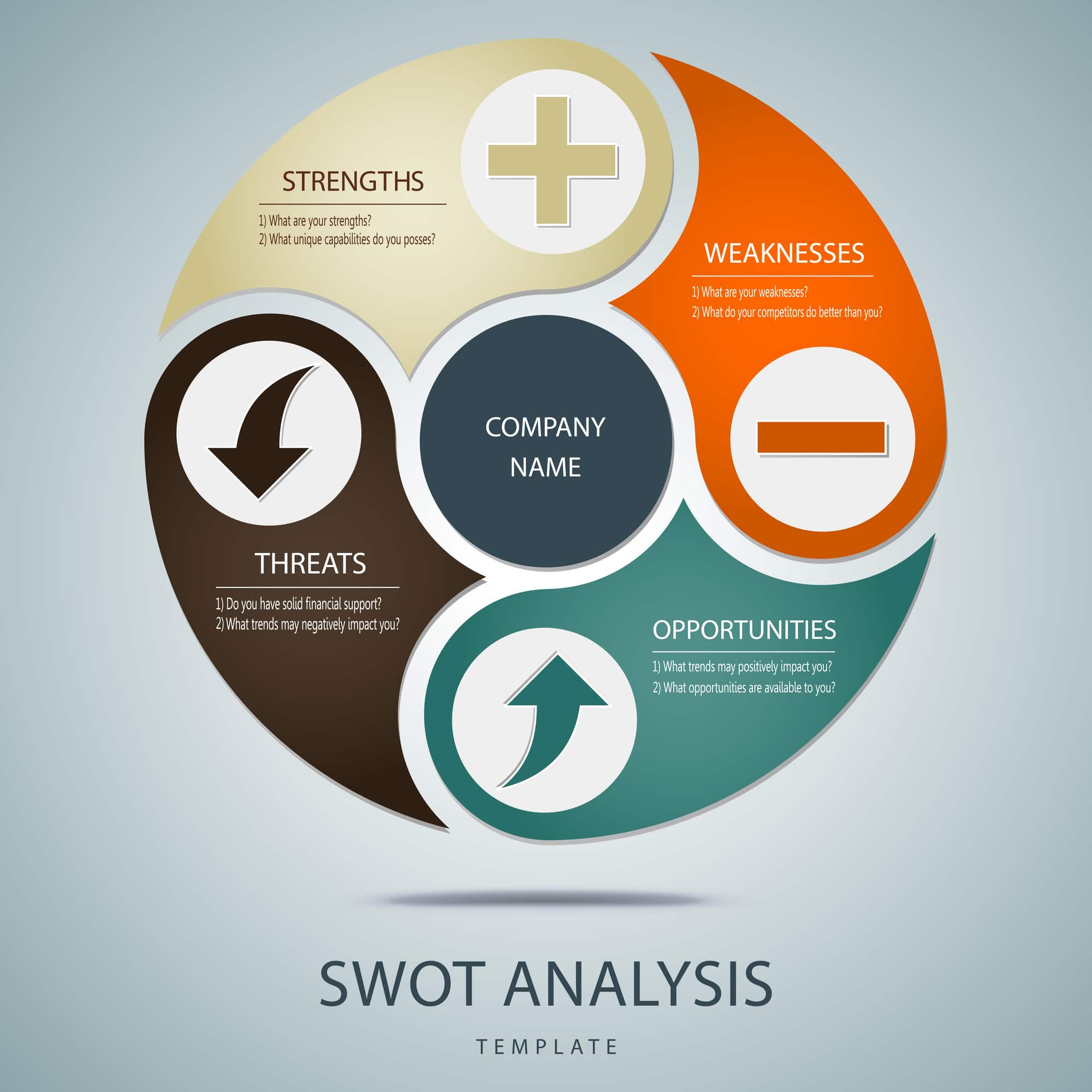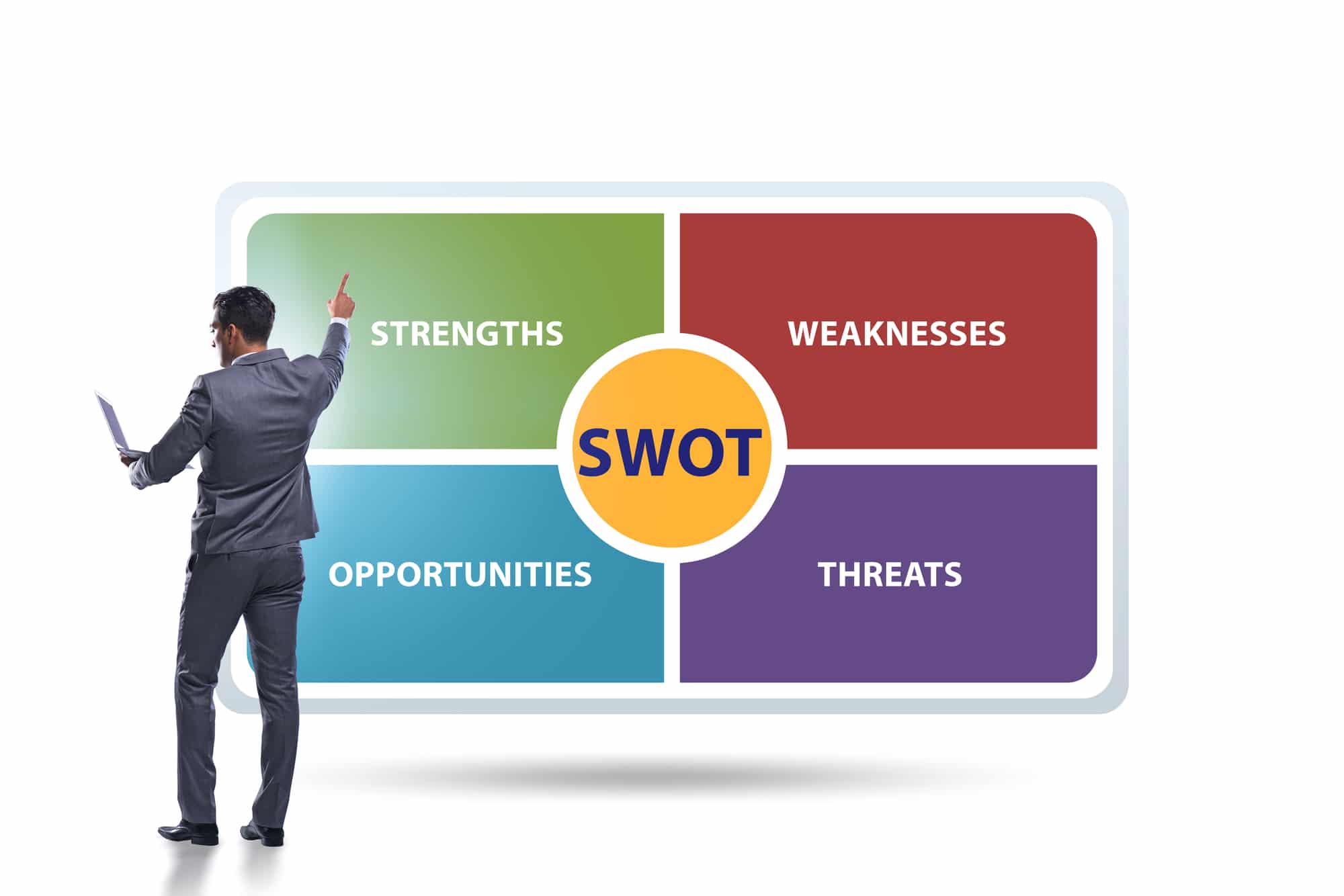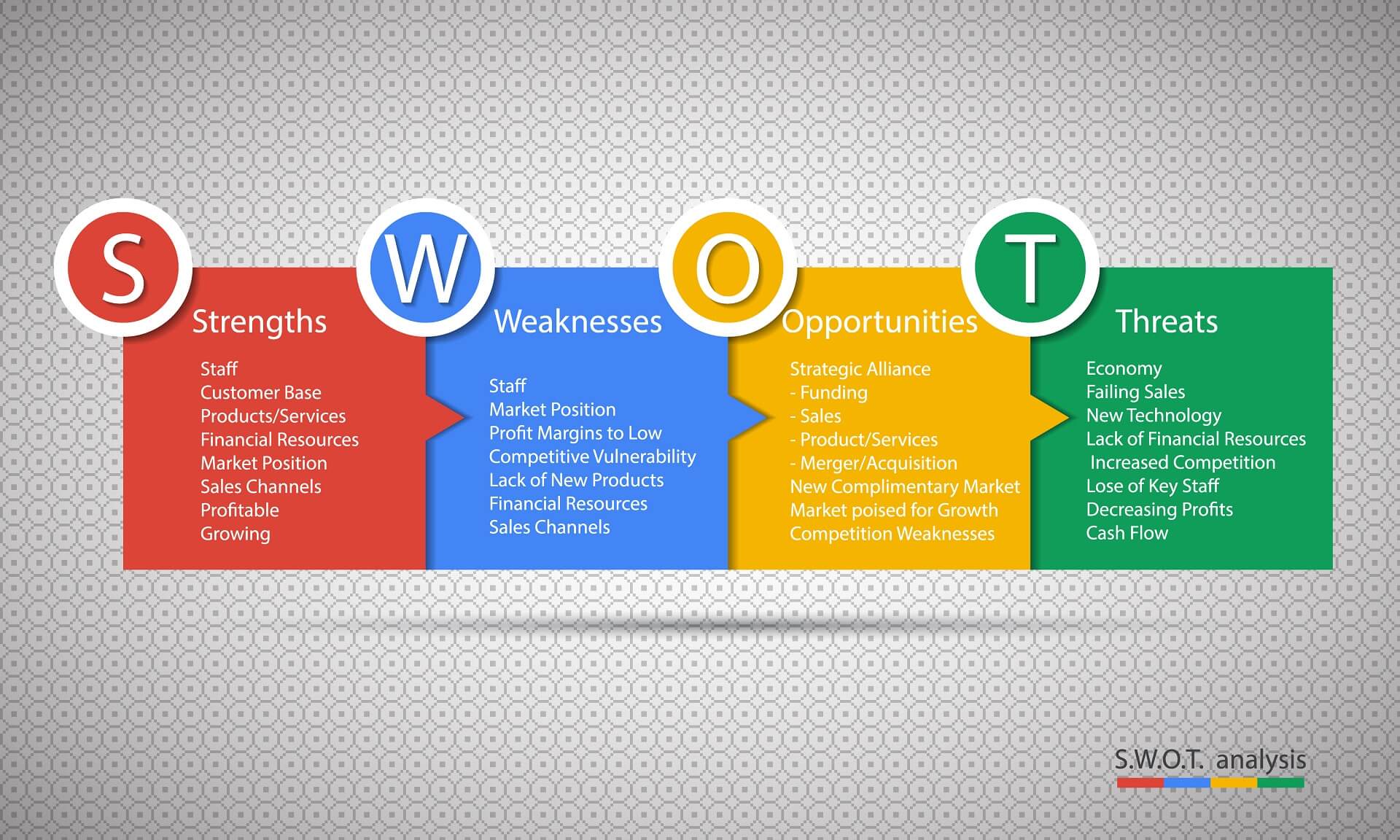What is SWOT Analysis? SWOT Analysis is a strategic business planning tool that can be used for analyzing different business situations faced by a company.
This analysis allows businesses to assess their current positions in the market. It also extends to the resources and efforts required to change, sustain or strengthen that position. Four key aspects of a situation are analyzed, including strengths, weaknesses, opportunities and threats, to provide a clear picture of the situation. All these factors are included a SWOT analysis template.
SWOT Analysis can be used for various purposes including:
- Marketing Analysis
- Business Development
- Strategic Planning
- Research Report
- Business Planning
- Competitor Evaluation

What is a SWOT Analysis Template?
A SWOT analysis template provides business managers with a structured format that they can use to analyze the key factors of SWOT. This analysis is typically done before a strategy formulation and planning process is undertaken by the company for its business, products or teams.
A template can help managers understand what factors should be rightfully included in the categories of strengths, weaknesses, opportunities and threats.
To help you better understand how this analytical framework is used, here is a SWOT Analysis template:
| Internal | External | |
| F a v o r a b l e | Strengths: - Identify capabilities - Evaluate resources including assets and people - Analyze competitive advantage - Assess intangibles like data, knowledge and experience advantages - Evaluate financial reserves - Check processes or IT systems driving value - Assess market research abilities | Opportunities: - Development in technology and innovation - New or better target markets - New partnership and contracts, and surprises - Business or new product development - Industry, market and lifestyle trends - Global influences and import/export - Seasonal business trends - Economies of scale and production volumes |
| U n f a v o r a b l e | Weaknesses: - Lack of capabilities - Unfocused competitive strengths or lack of a core competency - Deadline, pressure and time limits - Cash drain or cash limitations - Supply chain continuity and delivery - Inefficient management structure or lack of succession planning - Business reputation, reach or awareness level | Threats: - New legislative regulations - Political, environmental and economical effect - Development in the IT and communications industry - Loss of resources or partners - Changes in market demands - Shift in competitive atmosphere - Unavoidable circumstances like natural calamities |

Types of SWOT Templates
There are three types of SWOT analysis templates available that can be used by businesses to carry out a SWOT analysis.
The Classic SWOT Analysis Template
Often used in strategic planning, this template sums up the four key factors of the business environment including strengths, weaknesses, opportunities and threats. Explaining a few key elements that can be added to these categories in a broad and subjective manner, this template is easy to use and can help you record outcomes at the end of a strategic planning meeting or brainstorming session.
However, this analysis is usually used when you are already done with your strategic analysis.
The Ultimate SWOT Analysis Template
Having more than 50 analytical questions in all categories, this type of SWOT template provides you with a thorough analysis of the situation. This analysis is to be conducted before you make any strategic plans since it has the power to help you effectively analyze your resources and current market position clearly.
This type of analysis acts as a guiding tool for formulating a business strategy since it highlights weak areas of your business that you need to focus on and the threats you should mitigate.
The Distinctive SWOT Analysis Template
This template is connective in nature and allows you to develop a relationship between your internal and external factors.
This creates a grid like structure having categories including Strengths-Opportunities, Weaknesses –Opportunities, Strengths-Threats and Weaknesses-Threats. This can help you analyze how you can implement the results of a SWOT analysis for turning around the situation in your favor. In addition, it will give a clear idea of factors that should be enhanced and eliminated.
Depending on your own specific assessment needs, you can decide which type of SWOT template you should choose for carrying out the analysis. The Classic one can help you sort out your key strategic points, the Ultimate template can help you formulate the strategy, and the Distinctive one can help you relate the internal and external factors of your business environment.

How to Do a SWOT Analysis Template
For business managers, SWOT analysis is an extremely helpful business tool that can help them assess situations before they take any decision regarding their actions and strategy.
This analysis helps a company determine what its Strengths and Weaknesses in terms of resources and processes are and what the Opportunities and Threats they would have to deal with would be if they pursue a certain course of action. This way, a business can have a clear idea of the internal and external factors that come into play during a situation like a new venture, a recent advertising campaign, or a new product launch.
This SWOT analysis template can give you an idea of factors that can be included in each of these categories.
In every SWOT analysis table, it is common that a set of two elements always negates the set of the other two elements. Strengths oppose the weaknesses while opportunities and threats go against each other. In that particular order, you can consider all possible market elements that relate to a situation, putting them in either one of these categories. While you are running a SWOT over a situation, a factor that isn’t exactly your strength is counted as your weakness.
SWOT is a subjective form of analysis that is made by a business manager.
Every manager would interpret this SWOT analysis template in his or her own way, making somewhat biased assumptions. This is one of the biggest limitations associated with this analysis and the reason why managers prefer to carry out SWOT with a team through a brainstorming session, allowing multiple opinions to be heard and completely unbiased decisions to be made.
External consultants can also be hired to analyze a business and develop a SWOT analytical report for the company’s current situation in order to limit the bias, based on the aforementioned SWOT analysis template.
Image: Ivanov Alexey, dizain/Shutterstock.com and DepositPhotos


